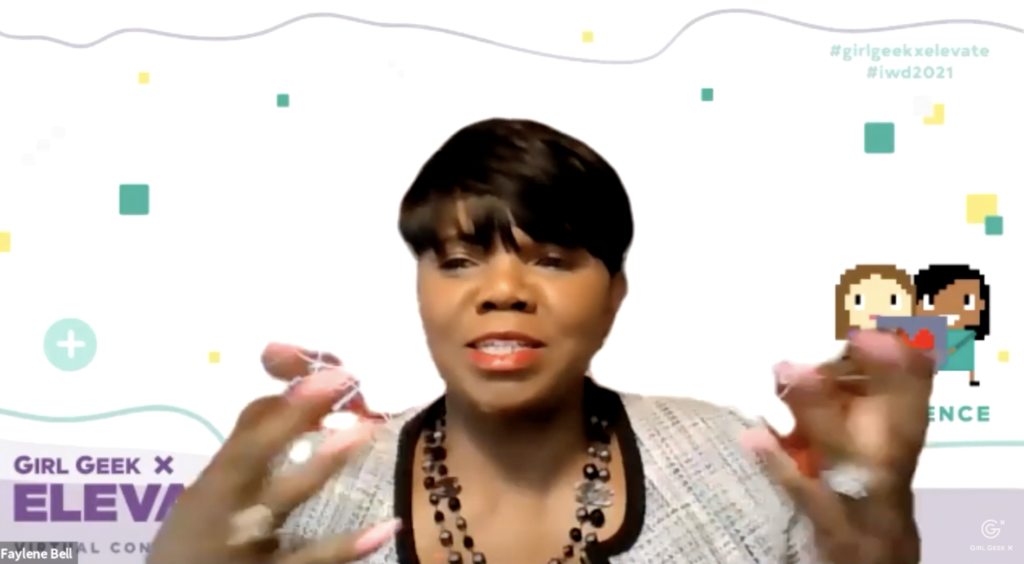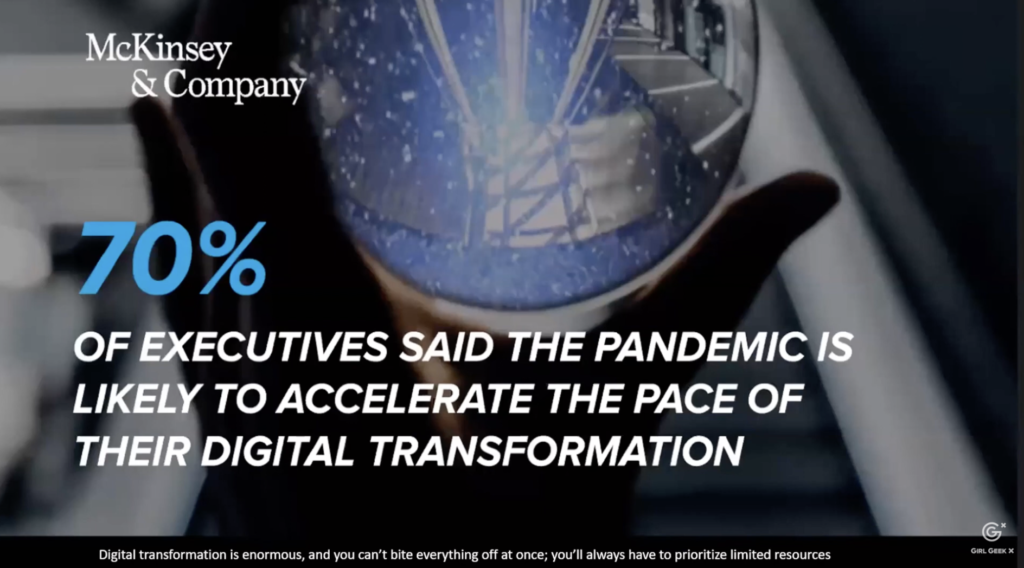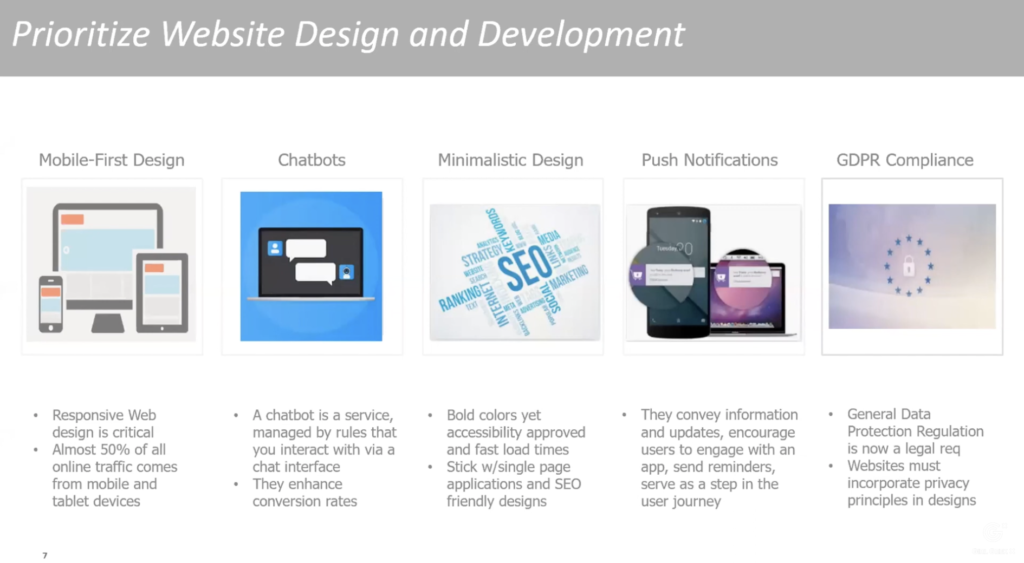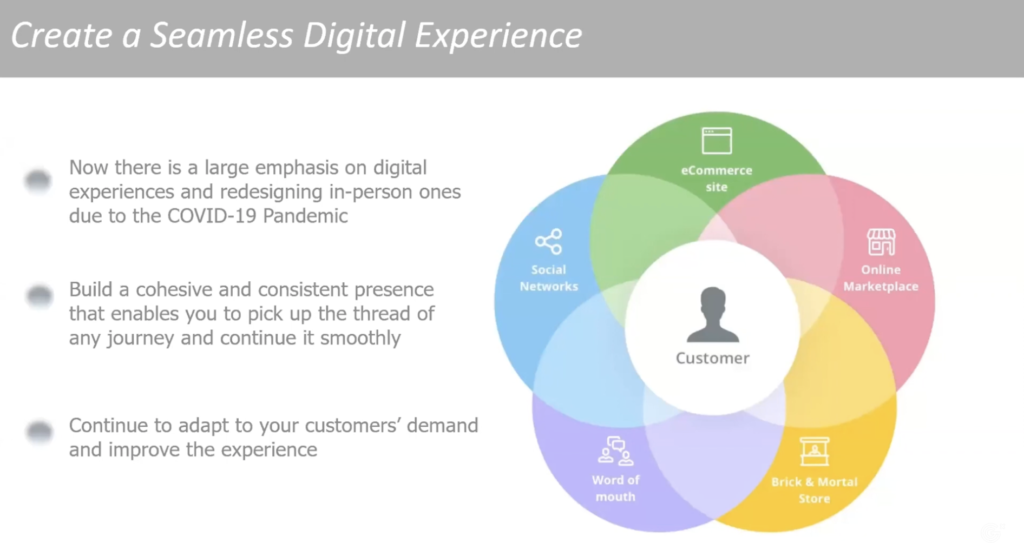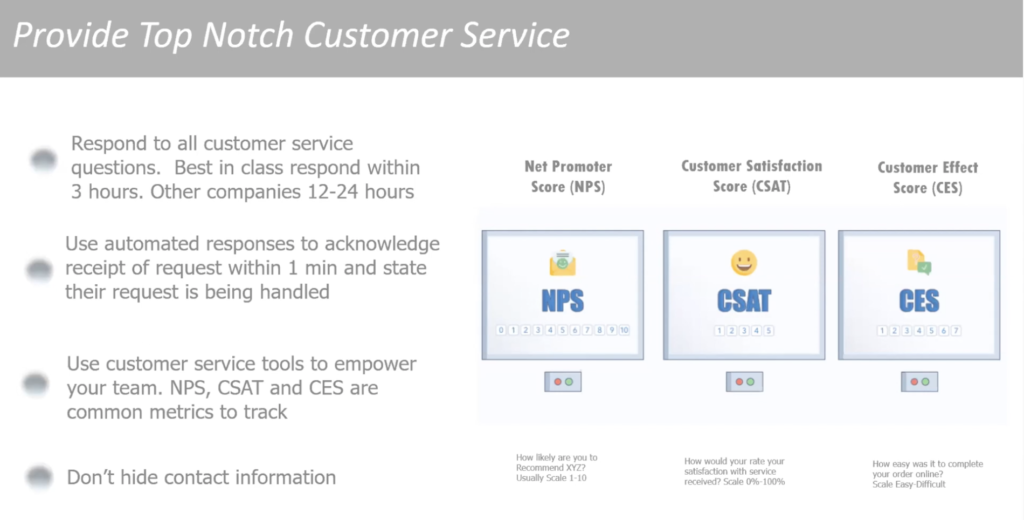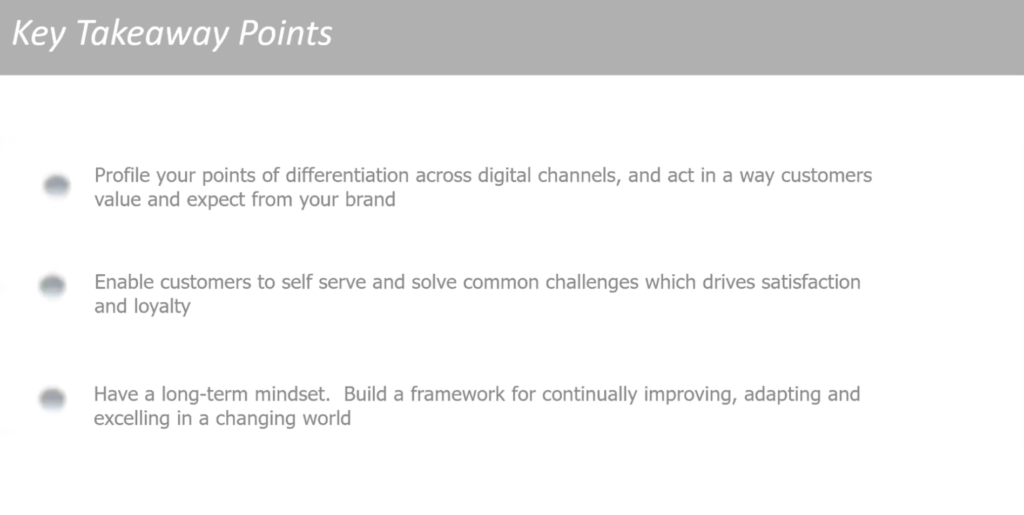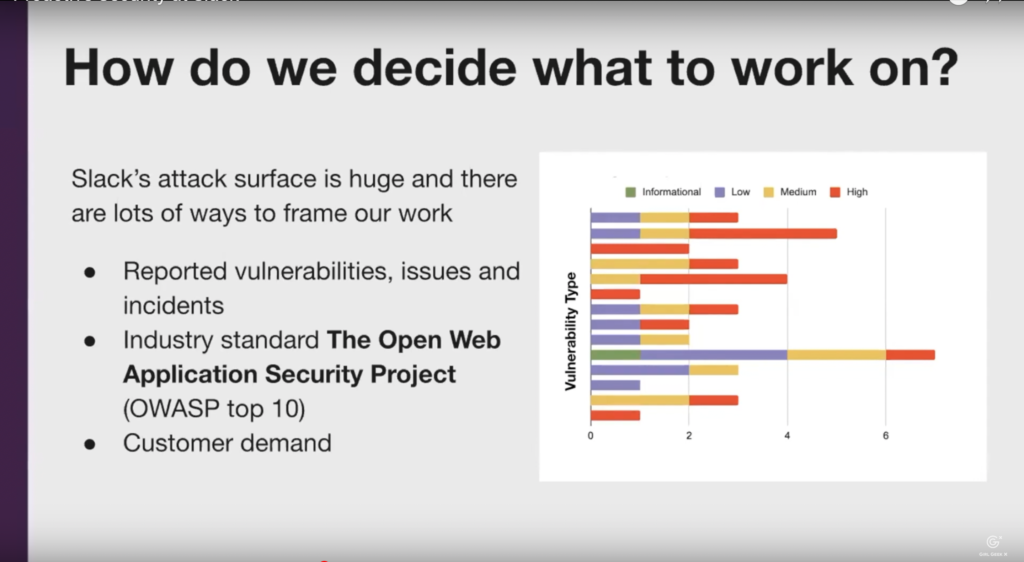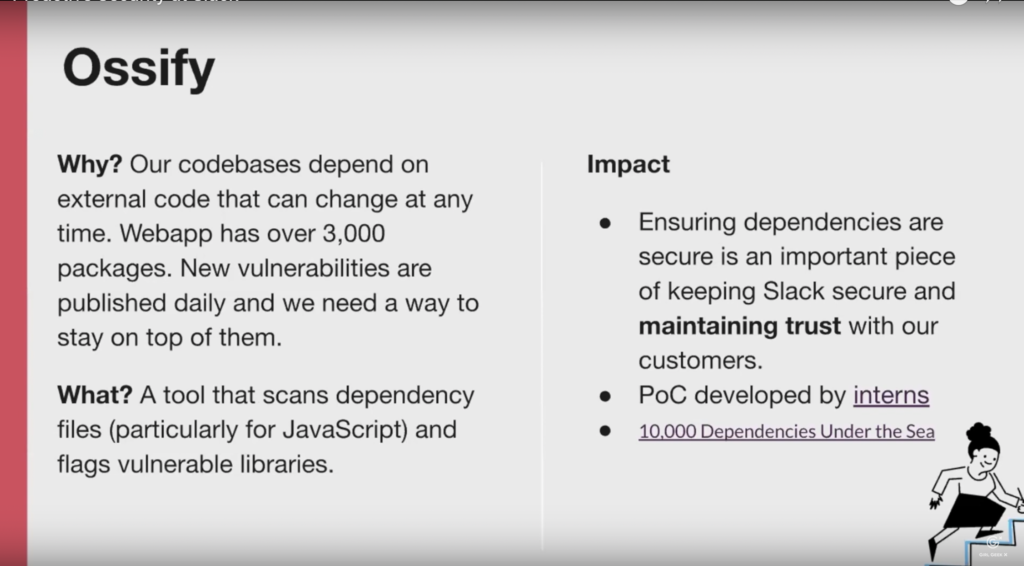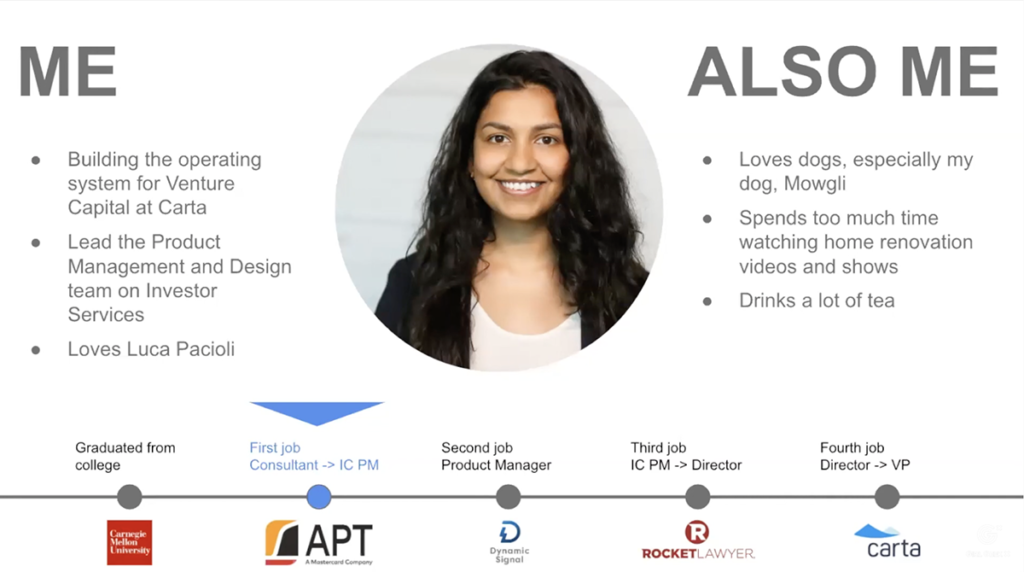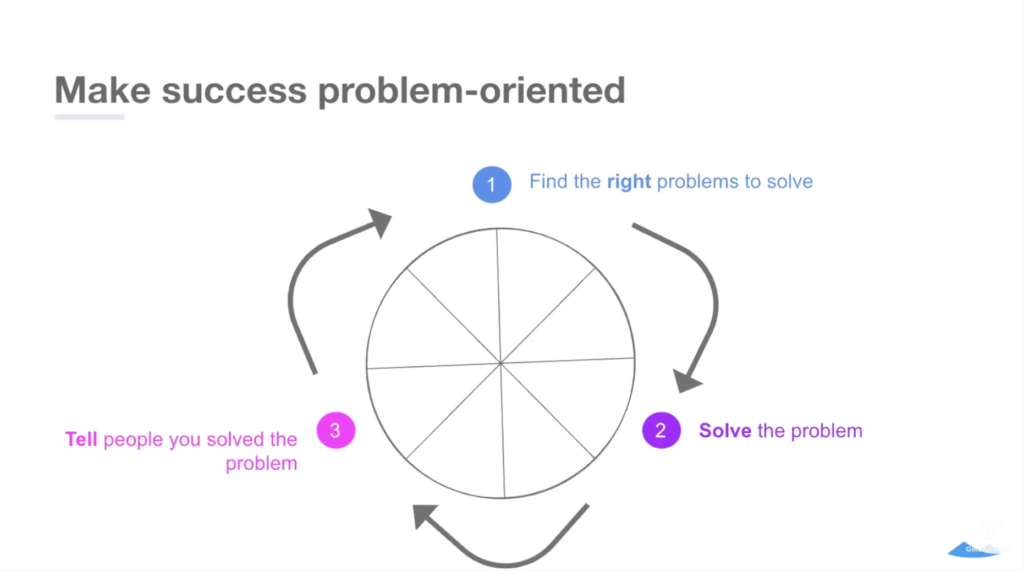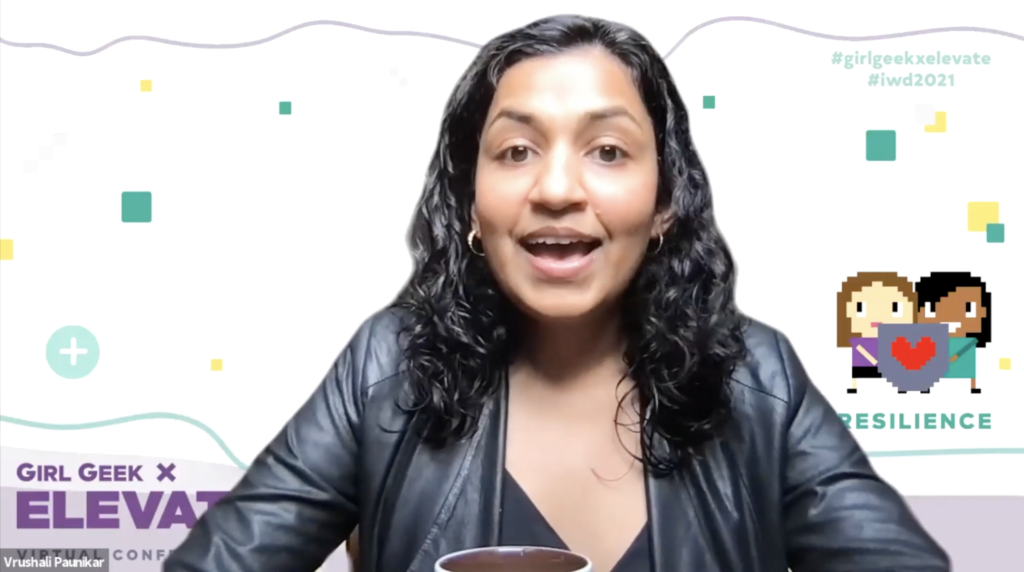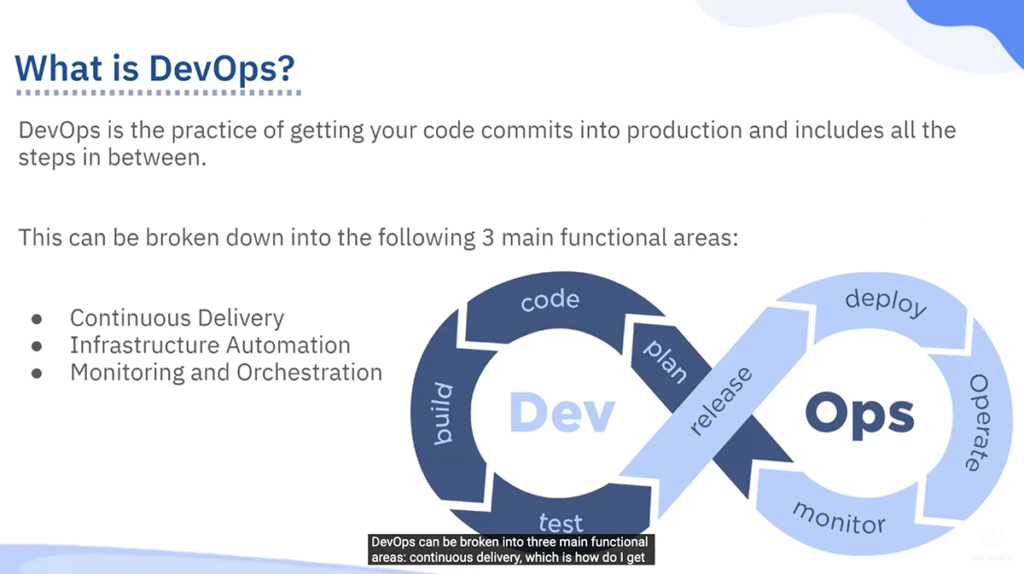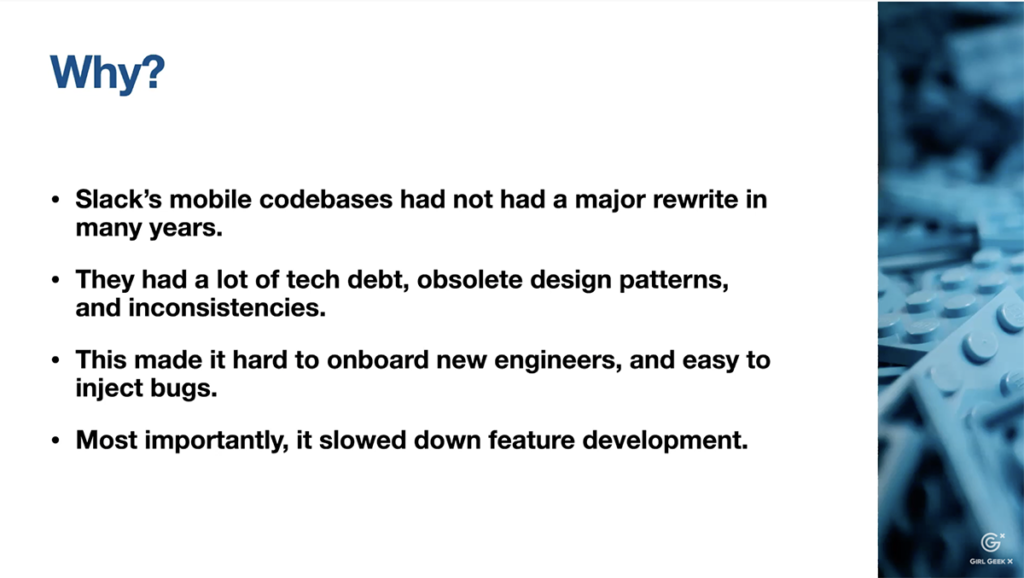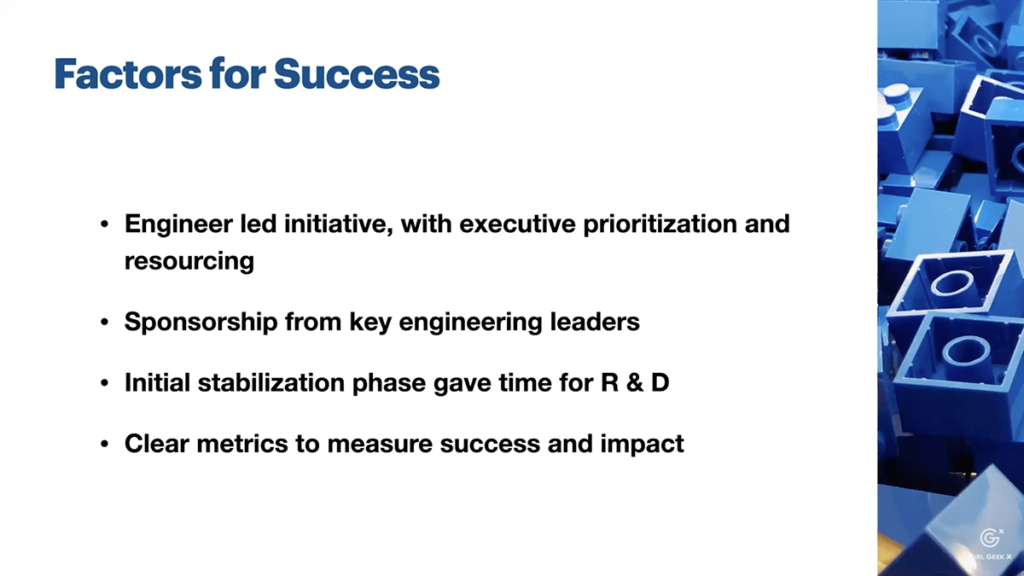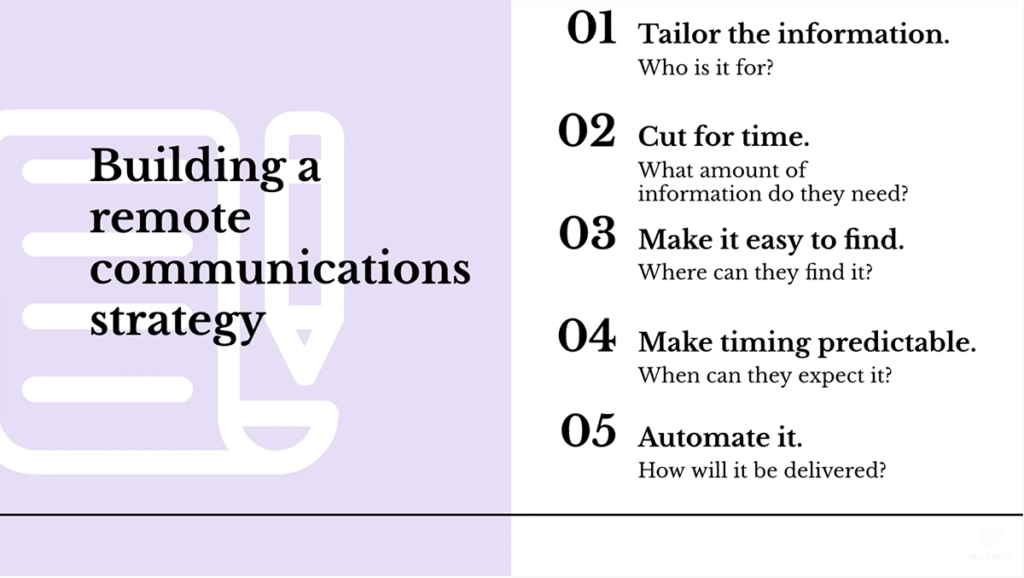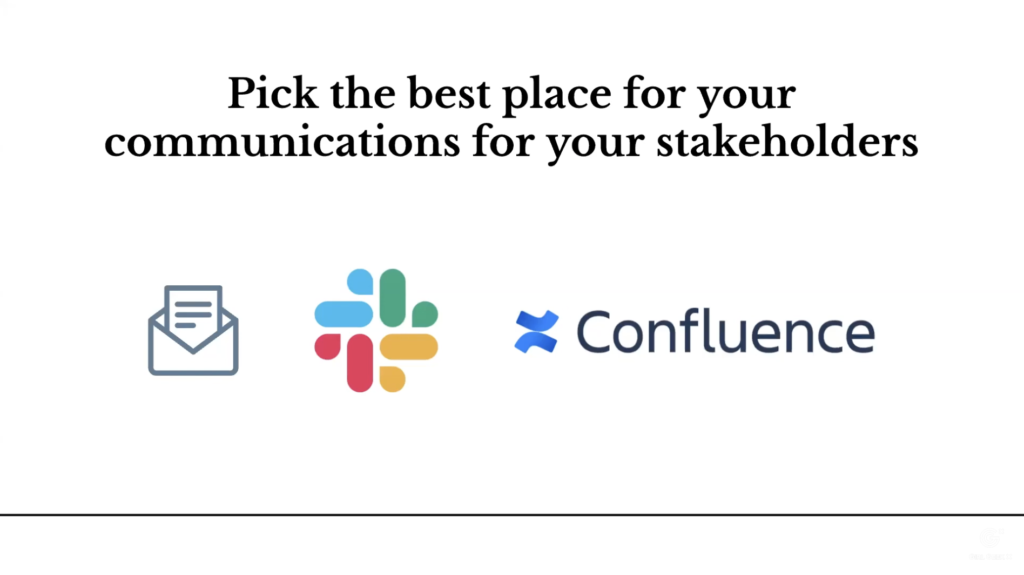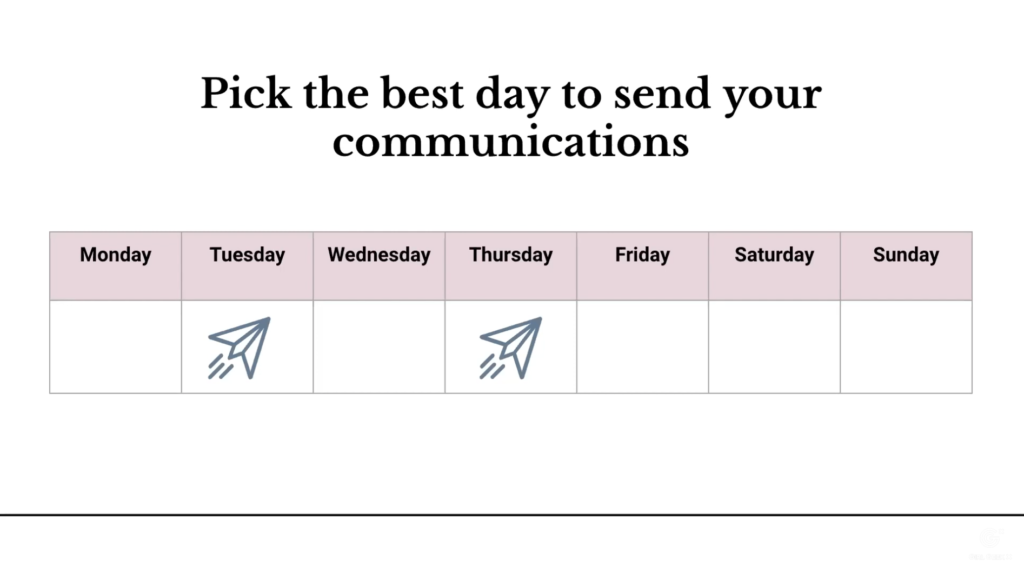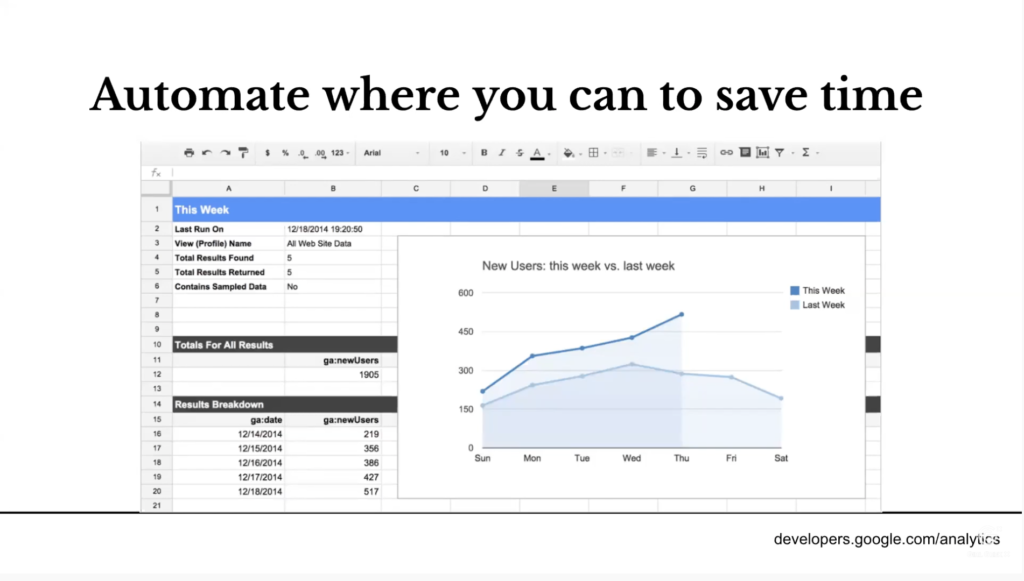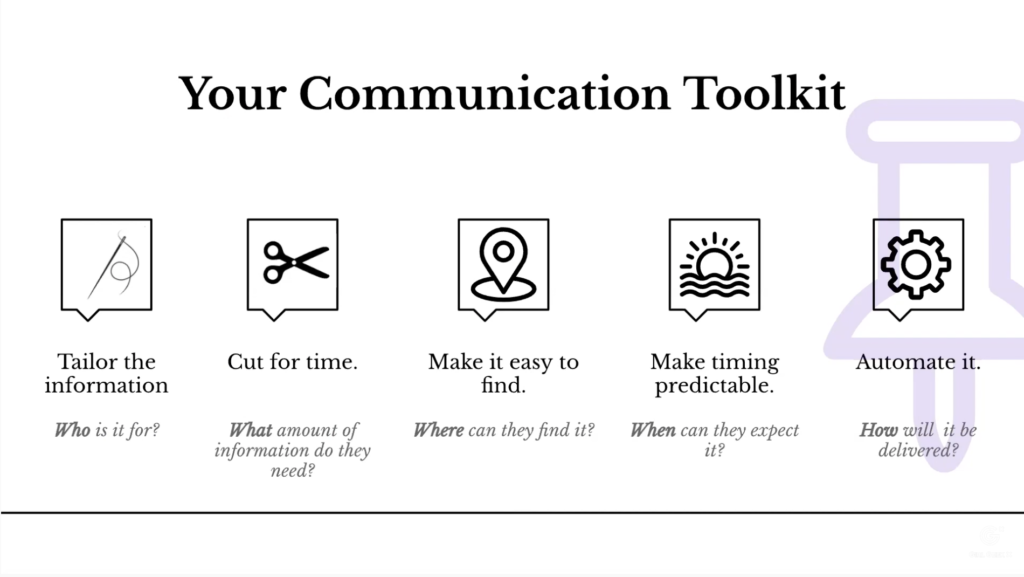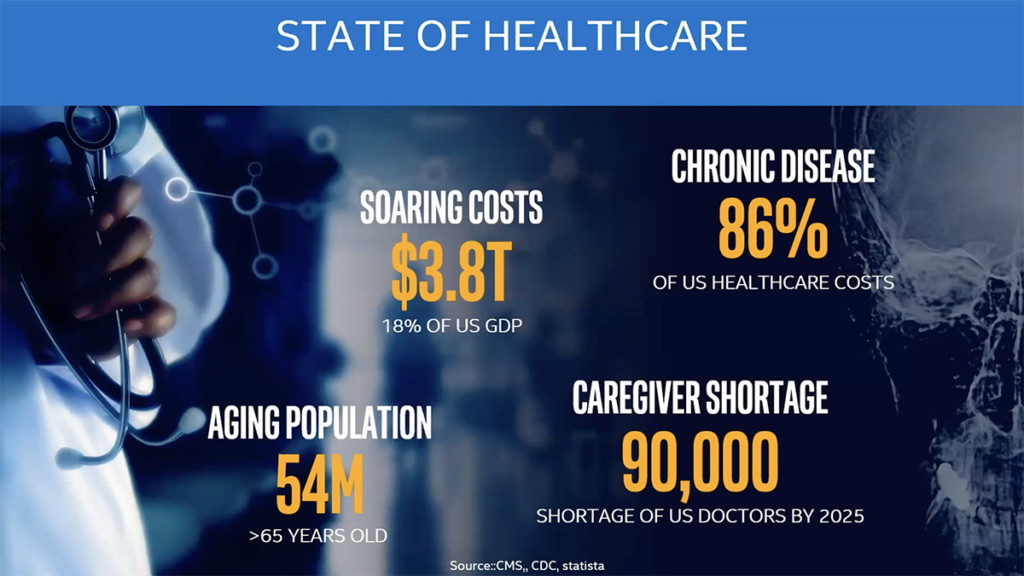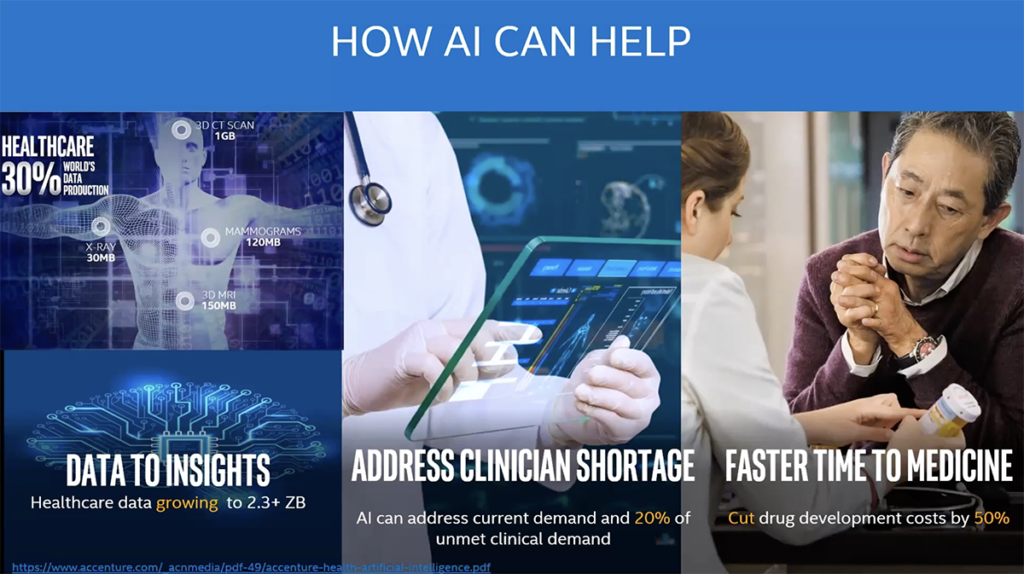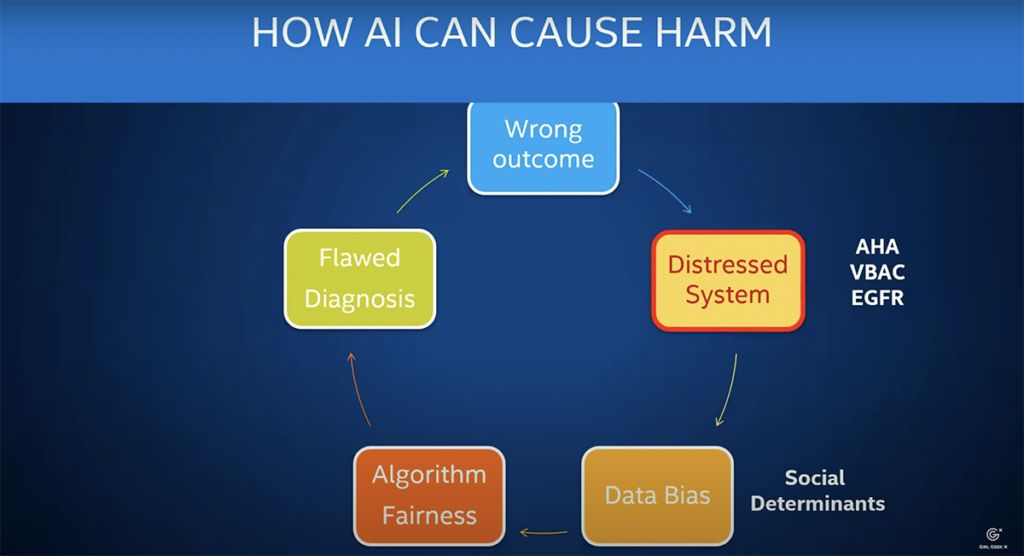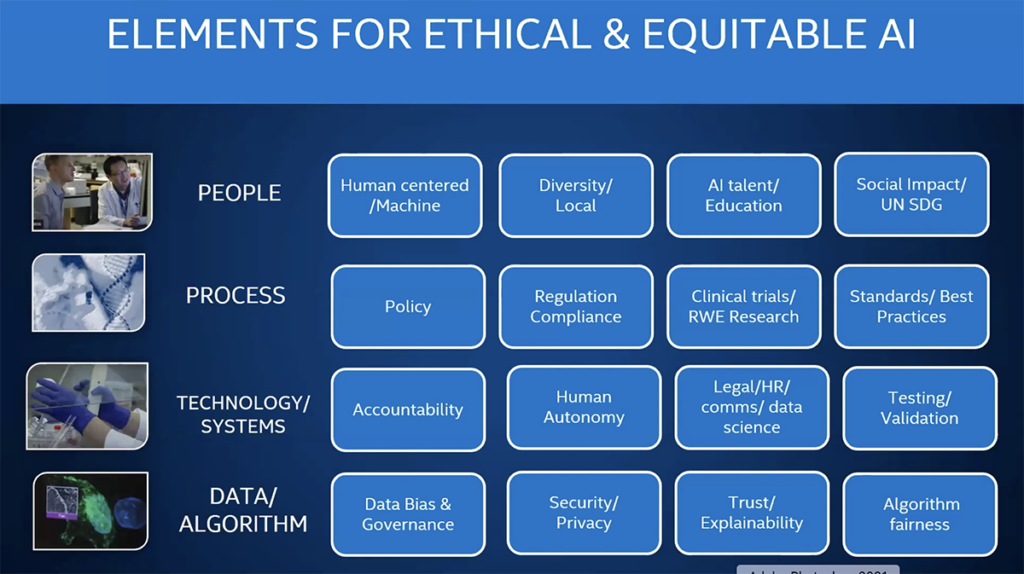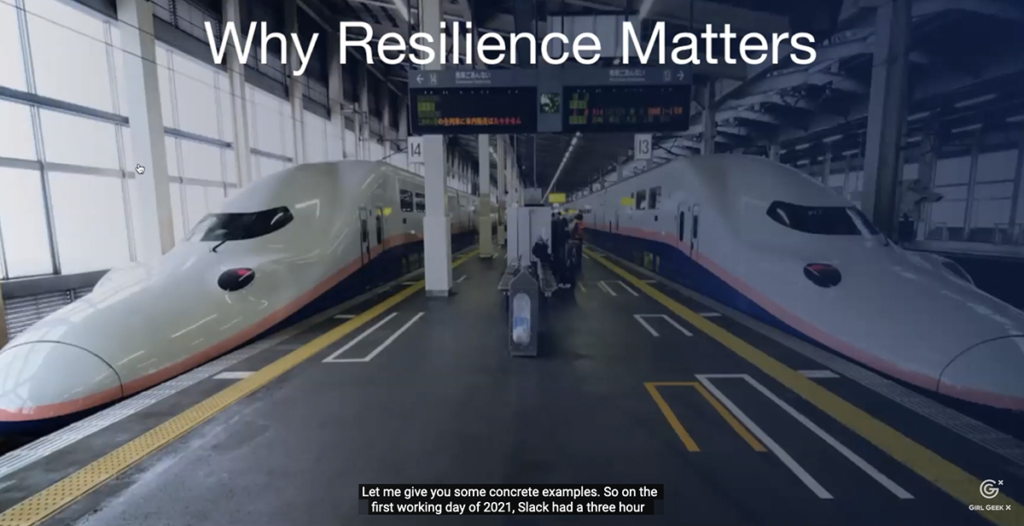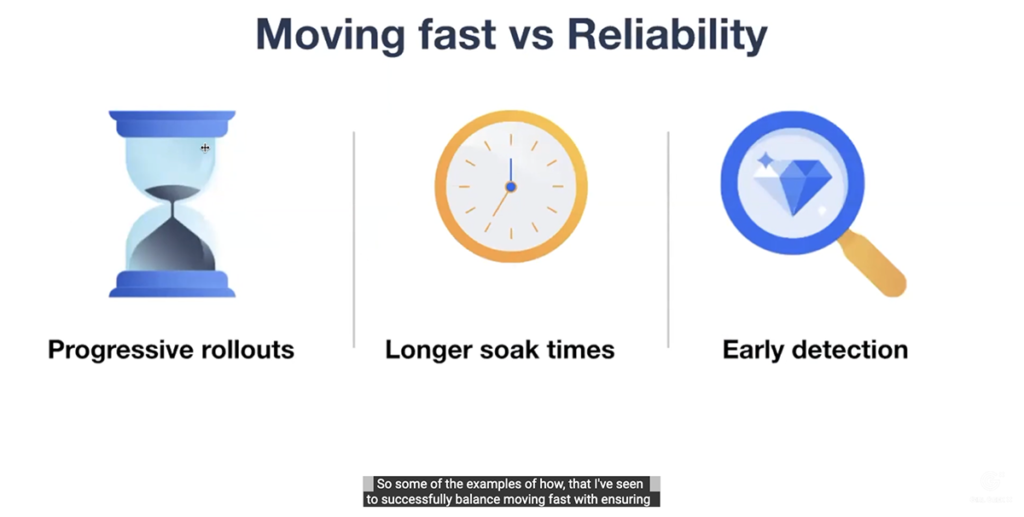Like what you see here? Our mission-aligned Girl Geek X partners are hiring!
- Check out open jobs at our trusted partner companies.
- Watch all Elevate 2021 conference video replays!
- Does your company want to sponsor a Girl Geek Dinner? Talk to us!
Transcript
Angie Chang: Now, it’s time for our next session. Thank you, Ashley. We’re going to have Iliana Montauk join us. She is the CEO of Manara and she will be speaking today in a Fireside Chat. I’ll let her introduce herself.
Iliana Montauk: Hi, everyone. My name is Iliana and I’m the founder of Manara. I’m going to be sharing with you guys what it’s like to be a woman engineer in places like Gaza and how important it is to receive mentorship during that journey from Gaza to Google. I am joined by Dimah. Dimah, would you like to introduce yourself?
Dimah Zaidalkilani: Hi everyone. My name is Dimah Zaidalkilani. I’m a Director of Product Management at GitHub. I’m excited to be joining Iliana to talk about my experience and how we started my career and throughout and how I’ve been a mentor and a mentee and how it’s impacted my career.
Iliana Montauk: Do you want to go first maybe Dimah, by sharing your own personal experience as a mentee?
Dimah Zaidalkilani: Sure. I started as a Product Manager at Microsoft and it was straight out of college or university in my home country, in Palestine. The first stage I got to be a mentee was at the time it was my boyfriend then, my husband now, who helped mentor me through the experience of getting the right resources, to knowing how to navigate, how to train for interviews and what resources I needed. He was studying Computer Science at University of Washington.
Dimah Zaidalkilani: I was studying at a local university in Palestine. So, I did not have as many resources. I did not have access to career fairs that he got access to. So, when I passed the initial interview with Microsoft, he shared all the links with me and guided me through what it’s going to be like for interviewing. Spoiler alert. I got accepted at Microsoft and have been working as a PM at Microsoft and now GitHub. So, that was the first step.
Dimah Zaidalkilani: The second step of being a mentee was when I joined, it was just like a shell shock. Everything was different. It was a new culture, new acronyms and corporate related concepts and all. I was fortunate to have a peer mentor who was on the same team assigned to me. He helped me throughout understanding all of the difficulties. I felt like I always had an ally in the room, talking about what we were going through.
Dimah Zaidalkilani: Of course, the imposter syndrome was kicking in hard in the first few months and it never goes away, but it was really aggressive in the first few months, like what am I doing here? Am I equal to the other people in the room? But, he was always there as an ally, keeping me grounded, rooted, to understand I do belong there. I have a lot to offer.
Dimah Zaidalkilani: It was just the lingo that I needed to get the agile practices that we needed to understand. So, from both those experiences, I felt like… I made a promise to myself. Whatever experience I had six months into the job, doesn’t matter, I’m going to give back to either people around me, newcomers to the company, interns or even cross borders in different parts.
Iliana Montauk: How often did you need mentorship at that beginning stage when Imposter Syndrome was especially strong, when you had just arrived from Palestine to Microsoft?
Dimah Zaidalkilani: Always. Every day. I used to write a list of the questions. My manager at the time was great also at mentoring where between him and my mentor, I would have many, many questions and I would go… It’s only 30 minutes from a mentee’s perspective, from a mentor’s perspective. But, those 30 minutes, be the fact that they were there, they answered my questions, made me excited to bring more. I didn’t take that for granted. I appreciated their time. I wanted to make sure that I’ve used it, but it helped a lot because you feel like once we’re on the same level, we understand the lingo and now your creativity gets to kick in as a mentee. Then you feel like, Oh, I have a lot to offer to the table just like everyone else. It was just great in helping with that.
Iliana Montauk: I know we’re going to talk later. I would like to talk later about your experience now that you’re a leader in the product team, mentoring people. But, just before we go to that, what you were saying resonated with me so much. I went to Harvard and became a PM later and of all people, with that background, I feel like I should have been confident. I grew up in Silicon Valley and still I felt Imposter Syndrome the whole first year or two that I was a PM. I needed someone to almost daily tell me how much they believed in me.
Iliana Montauk: One of the reasons that I started Manara is because Palestine is just full of people like you, who are so, so talented, but there’s that last little gap sometimes of getting that first job or then being confident during your first six months in that job.
Iliana Montauk: Just a little bit of background in Manara and how we engage mentors with Manara. Manara is a program that helps the top engineers in the Arab region, starting with Palestine, get their dream jobs at global tech companies. It came out of an experience where I was running a startup accelerator in Gaza, which was funded by Google.
Iliana Montauk: Google had done a developer outreach event in Tel Aviv and then they got invited to do one in the West Bank and then in Gaza. When they were there, they were just overwhelmed with the amount of talent, how smart people were, how much they were interested in tech, studying technology, spoke fluent English, but just not connected to jobs and unemployment, it’s like 70% for recent college grads in Gaza, right? It’s crazy.
Iliana Montauk: They launched this program in Gaza, which then I started to run and I had that same experience of meeting tons of people like Dimah, people like my co-founder now, Layla, who were super sharp, but didn’t necessarily have jobs locally. So, at Manara, we’ve been helping both women and men, but with a really strong focus on women, first, just even dream of getting a job at a place like Google because that part is a really important step.
Iliana Montauk: People don’t realize that they could get a job at a company like Google. They think that that’s only for people who are brilliant and they don’t realize that they are.
Iliana Montauk: The way that we tackle that imposter syndrome, which at the time, I didn’t even know the term imposter syndrome and I didn’t even realize that’s what we were tackling, is by bringing people like Dimah or like my co-founder Layla who became a senior software engineer at Nvidia, to them just doing even calls like this over Zoom or even better, people who are not even from the Arab world, working at these companies and just meeting with them one-on-one or in groups. They realize coming out of those, whether it’s a training session or a mentorship session or whatever, they go, “Oh, this person is actually not that different from me. I guess I could work here.”
Iliana Montauk: And from there, Manara involves volunteers from tech companies around the world to teach these participants how to interview, because interviewing is a specific skill. Dimah, I don’t know how you did it, but I know that for our participants, they have all the talent and tech background that they need for the job. They’re graduating with computer science degrees. They’re already engaged in competitive programming competitions globally. But, what they don’t have is how to interview and especially at companies like Google, Facebook.
Iliana Montauk: There’s that very specific data structures and algorithms interview, which they’re totally unprepared for and so we teach them how to do that. We engage people from the tech sector globally to do mock interviews with them. It’s by doing these mock interviews that they then are ready and by the time they end up at Google, we recently had actually a 71% referral to hire rate at Google thanks to that.
Iliana Montauk: One of our participants, Dahlia, she’s a 19 year old from Gaza. She now has an internship at Google lined up for the summer. We were just talking to her last week and she was like, “Look, there’s no way I could have done this without these mentors,” because not only were the mentors doing mock interviews with her, I think the women mentors took a special interest in her because she’s a woman and gave her extra consistency of meeting with the same person every week and getting tips. Often, what I’ve noticed is that the women mentors in our network have a different approach than the men. They think more like our women participants. So, they’ll be like, “Oh, this is how I do it.”, “Oh, yes, don’t worry. It’s normal to feel nervous talking out loud in an interview. So, just write on a piece of paper for one minute first and then start talking.”
Iliana Montauk: Those kinds of tips end up really helping our participants be successful. So, that’s what we’re up to and why it’s important for us to have a network of mentors. I’m curious, Dimah, now that you’ve had a chance of being on the other side, what is that experience like?
Dimah Zaidalkilani: Yeah, it’s been great. Thank you so much for sharing such an inspiring story about how you and Layla have been working on Manara and it’s been great watching the journey. For me, I’ve been trying to, as I said, seeing how much it impacted me, starting with mentoring me through the interview, getting the job, to actually being in the company and then seeing how mentorship really impacted me and my confidence in the first six months. I wanted to give back, not just in the company and or locally, but also in different countries. So, I signed up to be a mentor with TechWomen and funny enough, I learned about TechWomen when I was still senior student in the university. I saw how it actually, Oh, let me tell you what TechWomen is. TechWomen is a program that brings women from different countries like in the middle East and Africa, Southeast Asia, sorry, South Asia to go and experience being in tech companies in the Bay area for five to six weeks.
Dimah Zaidalkilani: They get a chance to have an internship in some of the companies in the Silicon Valley. I saw as a participant that went there and came back were creating programs to engage more girls to get into coding and back in Palestine, also other opportunities to give back to local community. So, what TechWomen focuses on is to empower women to be leaders in STEM opportunities in their communities. So, I wanted to be a part of it, but at the time it required industry experience.
Dimah Zaidalkilani: And then fast forward, I was a PM at Microsoft and I really wanted to give back and mentor in TechWomen. I’ve been doing that for three years and it’s been such an amazing experience to learn from these amazing women who are sometimes Product Managers in companies in Palestine, Lebanon or different countries. But, also you learn a lot how common the challenges we’re facing at work. It’s been really great, the opportunity to mentor these women and knowing that they will go back to their home countries and give back to the communities and then they can inspire more women to be in tech and start the cycle all over again. I’ve been mentoring there for three years now and it’s been a great, great opportunity to meet women from different countries I haven’t gotten a chance to learn about.
Dimah Zaidalkilani: But, locally within the industry, I’ve also been trying as much as I can to ensure I’m spending at least an hour or 30 minutes, even, every week to mentor other Product Managers, other interns within the industry and if anybody is on the fence about mentorship, I feel like there are a few things I wanted to mention. I understand that if the experience is different for different folks. Time for maybe women in the industry could be different. Having different… We already know that this is already a challenge, but this is my own experience. I encourage people or the audience to kind of tailor it to how it suits them depending on the time they have and depending on the opportunities they have.
Dimah Zaidalkilani: Ffirst of all, as I’ve been working in tech for a while, I’ve been thinking of what is the sense of purpose there. We get too stuck in the different releases, different sprints, having this to build this feature or this product. Just, at the end of the day, I feel sometimes I did not have the sense of purpose of what am I doing and at some point at the beginning, I actually debated leaving tech into some other industry because I wasn’t feeling that fulfillment, until I started mentoring.
Dimah Zaidalkilani: It just makes me happier that whatever goes wrong, whatever happened that week, I know at least within this 30 minutes, I was able to do something and impact someone’s day, even just that for an hour, feel listened and trying to coach them. So, definitely I feel like mentorship is giving the sense of purpose that a lot of us in tech lack. The other one is, it helped me pave my path to management.
Dimah Zaidalkilani: The more I was mentoring, the more it becomes natural to you to be a leader, to be a coach, rather than an instructor. It comes when you were mentoring, you can not just tell people like, Oh, this is the situation you’re going into. Here’s how I would fix it. It’s more of let’s talk through it. Let’s understand the challenges. Here’s how I would think about it and get to the resolution at the same time. So, it’s helped a lot in growing this muscle of coaching and leadership that helped me get to management, probably sooner than it would have if I were not a mentor.
Dimah Zaidalkilani: Finally, self-confidence. We talked a lot about Imposter Syndrome, but it gives you that sense of validation that when your mentee or the person you’re chatting with, talking about a problem, in that it comes natural to you. Like, “Oh, I know how to fix this.”, “Oh, look. This is how far I’ve become. Two years ago, this was like the dilemma of my week.” So, just chatting with them about it gives you a sense that I’ve come so far and it can ease down the Imposter Syndrome that because it reminds you of the things you’ve accomplished. The fact that maybe in the first six months or one year getting interrupted at a meeting was the worst thing that could have happened, that shook your confidence and now when you hear it, it’s like, “Oh, I understand. I empathize. Here’s how I think about it and here’s what we could do about it.”
Dimah Zaidalkilani: So, all through all this, just have been rewarding and makes you just whatever goes wrong that week or that month you know, at least, you got a chance to impact someone and help them, regardless at what level in the career it is. Whether it’s an intern, whether it’s a new industry hire or a new college, this 30 minutes for you, it could seem like I have to squeeze it in between this executive briefing and this conversation with our CTO or whatever, but it’s really important because it has impact. Like you said, Iliana, it has impact not just for the person it’s like that person will one day want to give back and then could trickle down to a lot of great things that we can have in the community.
Iliana Montauk: Yeah. It’s definitely creating a flywheel effect. We already see that the Manara candidates who have gone to Google are coming back and mentoring the next candidates on how to get in and how to be successful there. I know we only have a few minutes left. I don’t see anything in the Q & A, so I did just want to respond to some comments in the chat. One is, “So glad to hear you guys are helping people around the world,” and I just want to be clear like, yes, this is helping them and that’s so, so important.
Iliana Montauk: And it’s also helping these tech companies, right? When you’re making the case at your company to make time for this, don’t just position it as a social impact initiative. Tell them, we need the best talent at our company and the Manara volunteers who are interviewing or mentoring women from Gaza or other parts of the Middle East are spotting the best talent early and then they’re recruiting them into their companies and companies are more successful when they’re diverse and women have the most powerful soft skills that are going to rule the world and the tech skills, as well, right?
Iliana Montauk: That’s one important thing and then also mentorship doesn’t have to take a long time. So like, yes, if you’re in a company 30 minutes a week, or 30 minutes a day, is really valuable if you can do that. But, you can find other opportunities. In Manara, you can show up and just do one mock interview per month and that already is making a difference and you’ll find out later if that person got into the company or not.
Iliana Montauk: I do see a few quick questions. So, I’ll go ahead and start answering them. Some of the top tech universities in Gaza, there’s Islamic University, there’s UCAS, there’s University of Palestine. There’s at least six universities in Gaza and the West Bank, which is also, Palestinian is two pieces. There’s Birzeit, there’s An-Naja, et cetera.
Iliana Montauk: Then how do you go about mentorship relationships? Is it formal or informal? I’ll let Dimah speak to TechWomen, but I think it’s basically formal in both cases.
Dimah Zaidalkilani: Yeah, I think it’s-
Iliana Montauk: Go ahead.
Dimah Zaidalkilani: It depends definitely on where it is. I would say if it was within the same team, I would try to make it a bit formal, talk to the manager, if you share the same manager, to make sure that whatever guidance you’re giving is aligned with the management. So, it can be informal, of course. It could be over coffee or Zoom or tea every once in a while. It depends how it is. Is it a long-term? You’ve been mentoring someone or you want to mentor someone over two years or short-term over a project.
Dimah Zaidalkilani: Definitely, my advice is if you want it to be formal or you’re closer to them working on the same project, definitely discuss it with the manager, just so that we make sure that it’s kind of like you’re giving the same direction. If it’s informal, there’s no need to discuss it, but making sure that you have conversation about career goals or challenges.
Iliana Montauk: I saw you were responding to the question on the chat about how to get involved as a mentor, if you’re brand new in a company organization. One thing to do is to join external organizations that need your mentorship. Mentor someone from a different country that might really benefit from your perspective of recently getting in. Mentor people who were recently at your college, university, about how to make the leap that you just made. Those are just a few ideas.
Iliana Montauk: I know we’re at time, but maybe Dimah has one more thought to add.
Dimah Zaidalkilani: I just type my answer, so hopefully.
Iliana Montauk: Okay.
Dimah Zaidalkilani: But, definitely interns is the biggest source and it’s reaching out sometimes to HR to know if there’s any internal ERGs that you can join within the company to know what connections you could have. But, it’s amazing that you’re already new at the company and reaching out to nail this, so kudos to you, for sure.
Iliana Montauk: Yeah. How are we on time, Angie? I have to run. Sukrutha, go ahead.
Sukrutha Bhadouria: Thank you so much, Iliana and Dimah. This was amazing. We saw some great comments in the chat, appreciating all the information they learned from you.
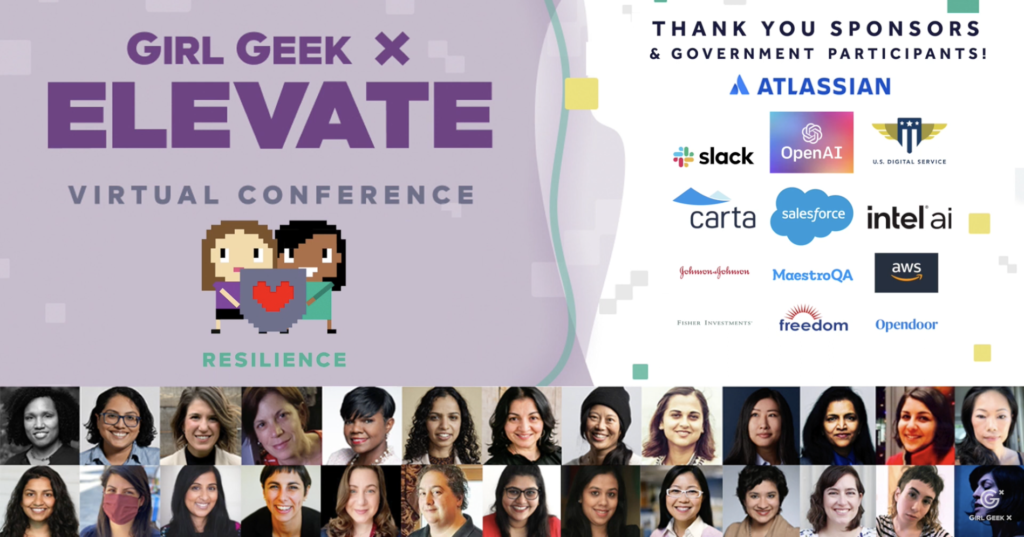
Like what you see here? Our mission-aligned Girl Geek X partners are hiring!
- Check out open jobs at our trusted partner companies.
- Watch all Elevate 2021 conference video replays!
- Does your company want to sponsor a Girl Geek Dinner? Talk to us!


